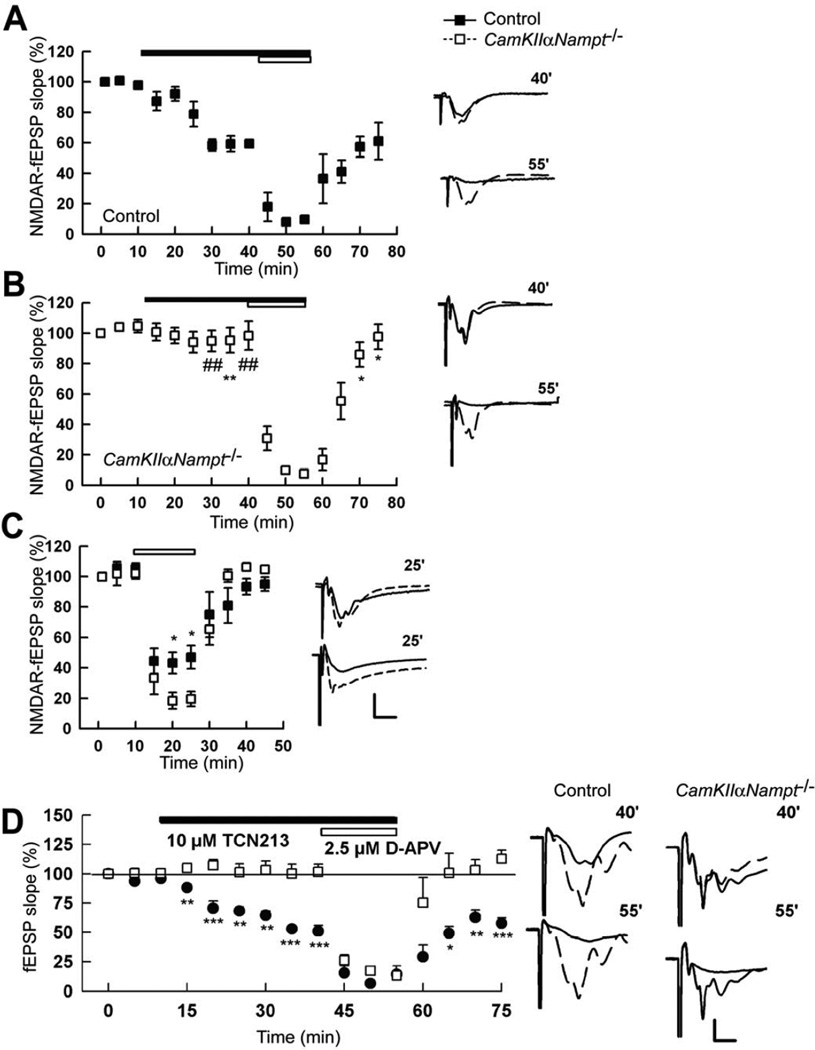Figure 3.
Postnatal day 30 CamKIIαNampt−/− mice showed impaired GluN2B–containing N-methyl-D-aspartate receptor (NMDAR)-mediated field excitatory postsynaptic potentials (fEPSPs). A, In control mice, ifenprodil (10 µM, filled bar) partially depressed NMDAR-mediated fEPSPs. Co-administration of D-APV (2.5 µM, open bar) thereafter almost completely suppressed the remaining NMDAR-mediated fEPSPs (n=5). B, In CamKIIαNampt−/− mice, ifenprodil only minimally depressed NMDAR-mediated fEPSPs. Co-administration of D-APV thereafter successfully suppressed NMDAR-mediated fEPSPs (n=5). C, D-APV (2.5 µM, open bar) alone suppressed NMDAR-mediated fEPSPs to a greater extent in CamKIIαNampt−/− mice than in control mice. D, In control mice, TCN 213 (10 µM, filled bar) partially depressed NMDAR-mediated fEPSPs. Co-administration of D-APV (2.5 µM, open bar) almost completely suppressed the remaining NMDAR-mediated fEPSPs (n=5). In CamKIIαNampt−/− mice, TCN 213 did not depress NMDAR-mediated fEPSPs. Co-administration of D-APV successfully suppressed NMDAR-mediated fEPSPs in both genotypes (n=5). A-D, Traces to the right depict representative NMDAR-mediated fEPSPs at the times denoted. A-C, Calibration: 1 mV, 5 ms. D, Calibration: 1 mV, 10 ms. Data are presented as mean ± S.E.M. *, # represents significance generated from Student t-tests and Mann-Whitney U-tests, respectively, in comparisons between control and CamKIIαNampt−/− mice. *,#P < 0.05. **,##P < 0.01. ***,###P < 0.001.

